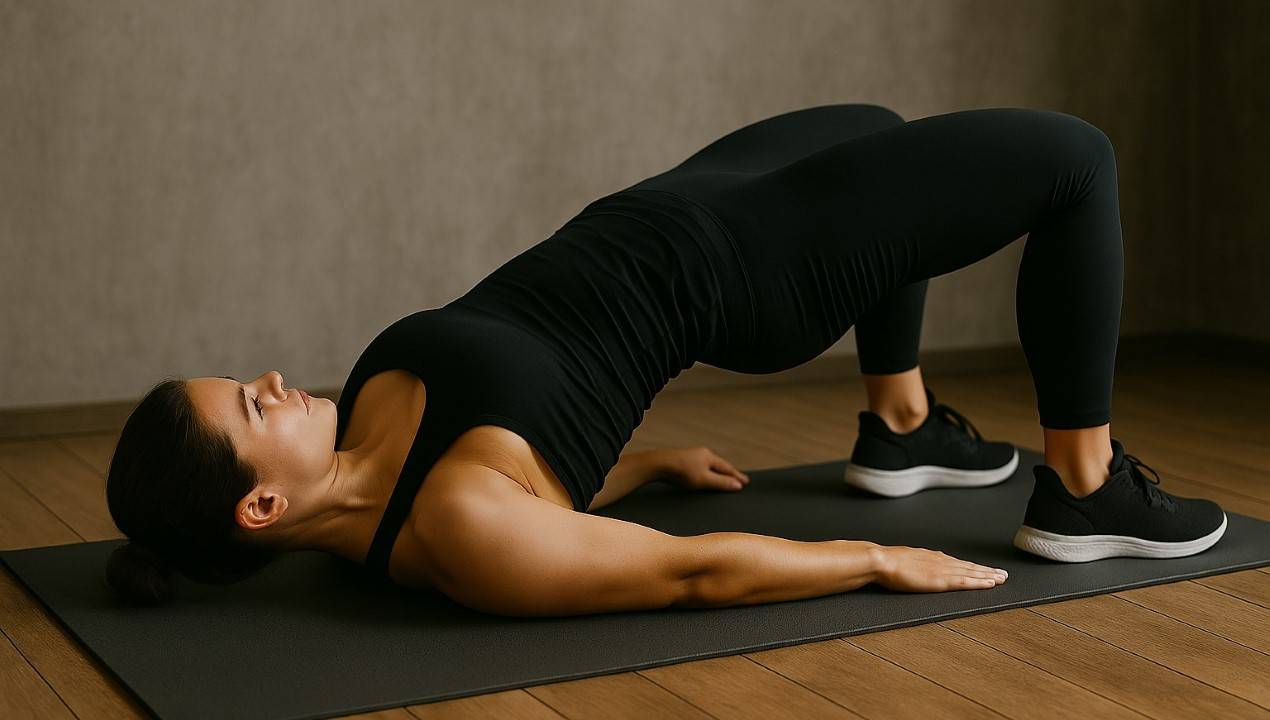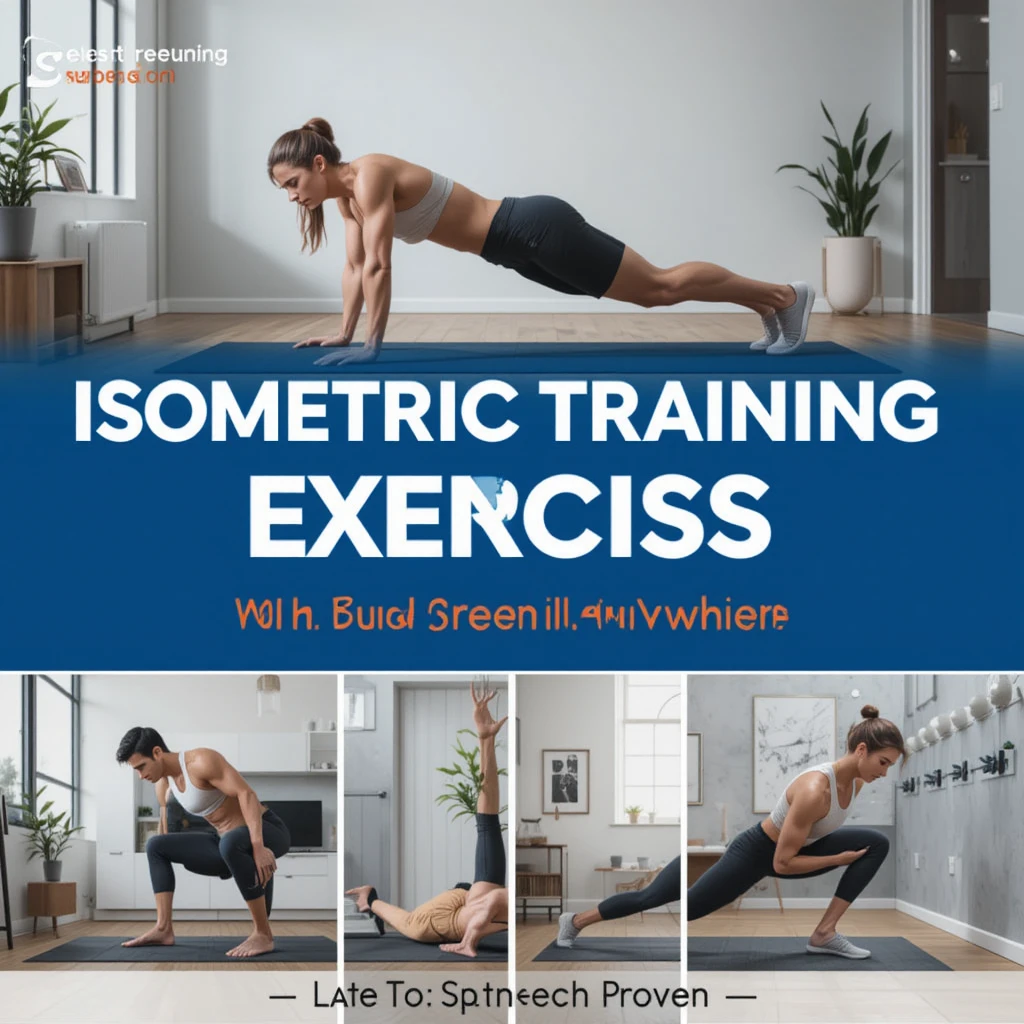Isometric training exercises are changing how we think about fitness. Many people struggle to find time for the gym or can’t afford expensive equipment. I have seen countless people transform their bodies using just these simple exercises. The solution is easier than you think – you can build serious strength without moving a muscle.
What Are Isometric Training Exercises?
Isometric exercises keep muscles engaged without any motion. The word “isometric” means “same length.” Your muscles work hard, but they don’t change length during the exercise. Imagine exerting full force against an immovable object. Your muscles are working, but nothing moves. This is isometric muscle contraction at its finest. I like this because it’s so simple, yet so powerful.
How Static Strength Training Works
When you do static strength training, your muscles contract and stay contracted. This creates incredible tension.
Your body creates maximum force during static contraction training. This signals that your muscles grow stronger. The best part? You control exactly how hard you work.
Latest Research on Isometric Training Exercises
Recent studies show amazing results. Latest research confirms that isometric training is more effective than HIIT, weight training, and aerobic training for reducing blood pressure. I find this incredible because it means you get better results with less equipment.
Published data suggest that isometric resistance training consistently elicits mean blood pressure reductions of 7.4/3.3 mm Hg, equivalent to antihypertensive medication monotherapy. This is as good as taking blood pressure medicine!
Why Isometric Workout Benefits Are So Powerful
Build Strength Fast
Isometric strength gains quickly. Tendon health improves with high-intensity contractions above 70%. I have seen people get 20% stronger in just 4 weeks using isometric exercise routine methods.
No Equipment Needed
Bodyweight isometric exercises need nothing but your body. This saves money and makes exercise possible anywhere. I love travelling with friends who use these techniques – they never miss a workout.
Save Time
Isometric workout routines take only 10-20 minutes. Doing IET for 12–20 minutes daily, three times a week, may help lower blood pressure. Perfect for busy people!
Joint-Friendly
Low-impact strength exercises are gentle on your joints. There’s no movement, so less stress on knees and hips. I recommend these to people with joint problems all the time.
Heart Health Benefits
Isometric exercise benefits include better heart health. Static isometric exercises, such as wall sits, are the most effective for lowering blood pressure. This is tremendous news for heart health.
Best Isometric Core Exercises for Beginners
Plank Variations for Core Stability

Get into a push-up position. Keep your body straight like a board. Hold for 15-60 seconds. This core stability drill works your entire middle section.
Wall Sit Isometrics

Stand against a wall. Descend until your thighs form a parallel line with the floor. Hold for 15-45 seconds. This isometric leg exercise builds incredible quad strength. I like watching people’s faces when they first try this – they’re shocked how hard it is!
Static Strength Exercises: Glute Bridge Hold

Lie on your back with your knees bent. Lift your hips and squeeze your glutes. Hold for 15-30 seconds. This muscle-holding exercise strengthens your glutes and lower back perfectly.
Overcoming Isometric Holds: Wall Push

Stand arm’s length from a wall. Push as hard as you can for 10-20 seconds. This resistance band isometric workout equivalent works your chest and shoulders. No band needed!
Advanced Isometric Exercise Variations
Yielding Isometric Exercises: Single-Leg Wall Sit
Do a wall sit on one leg only. This makes the exercise much harder. Start with 5-10 seconds.
Isometric Holds for Muscle Activation: Side Plank
Lie on your side. Lift your body on one arm. Keep everything straight. Hold for 15-45 seconds. Switch sides. This core stabilization exercise is incredibly effective.
Muscle Endurance Without Movement: Pistol Squat Hold
Stand on one leg. Lower into a squat position. Hold for 5-15 seconds. This functional fitness technique is very challenging but builds amazing leg strength.
Creating Your Isometric Workout Routine
Week 1-2: Foundation Phase
Start with basic isometric fitness techniques. Hold each position for 10-15 seconds. Do 3 sets of each exercise. Rest 30 seconds between sets. I always tell beginners to start here – no exceptions.
Week 3-4: Building Phase
Increase holds to 20-30 seconds. Keep doing 3 sets. Add one new bodyweight resistance exercise each week. Your muscle tension exercises should feel challenging but not painful.
Weeks 5-8: Strength Phase
Hold positions for 30-45 seconds. Try harder versions of exercises. Do 4 sets instead of 3. Your strength-building holds should be getting much stronger now.
Week 9+: Advanced Training
Hold for 45-60 seconds. Mix easy and hard isometric exercise variations. Plan varied **isometric workouts for different days to target all muscle groups.
Isometric Training for Injury Recovery
Isometric training for injury prevention is incredible. Isometric exercises relieve shoulder pain and improve mobility. Low-impact strength training builds muscle without straining injuries, supporting healing while maintaining strength.
Common Mistakes to Avoid
Holding Your Breath
Many people hold their breath during isometric workouts. This is mistaken and dangerous. Keep breathing normally throughout each exercise. I always remind friends about this—it’s that important.
Poor Form
Form makes static strength exercises less effective. Make sure your body position is perfect before starting the timer. Quality beats quantity every time.
Too Much Too Soon
Don’t jump into advanced isometric core workouts immediately. Build up slowly over weeks. I have seen people get injured rushing the process.
Skipping Warm-Up
Always warm up before muscle-holding exercises. Do light movement for 5 minutes. This prepares your body and prevents injury.
Isometric Training Exercises for Specific Goals
For Weight Loss
Combine isometric workout benefits with cardio. Bodyweight resistance training builds muscle, which burns more calories throughout the day. I recommend doing isometrics 3 times per week, plus walking daily.
For Seniors
Low-affected strength exercises are perfect for older adults. The joint-friendly strength training approach protects aging joints while building strength. I have a 70-year-old friend doing these exercises successfully.
For Busy People
Static contraction training fits any schedule. You can do isometric fitness techniques in your office, hotel room, or living room. No excuses needed!
Combining Isometric Training Exercises with Other Workouts
Isometric exercise routine methods work well with other training. Add them to your regular gym workouts. Use them on rest days from heavy lifting. The functional fitness techniques complement any program.
I like combining isometric core exercises with walking or swimming. Boosts strength and cardio without excessive strain.
Who Should Do Isometric Training Exercises?
Everyone can benefit from static strength training.
- Beginners new to exercise
- Busy professionals with limited time
- Travellers without gym access
- People with joint problems
- Athletes wanting specific strength gains
- Seniors maintaining independence
- Anyone wanting muscle endurance without movement
I have worked with people from 16 to 80 years old using these techniques. Everyone can find exercises that work for their fitness level.
The Science Behind Isometric Strength Gains
Perform IST at over 70% MVC, holding each contraction for 3–30 seconds, totalling 80–150 seconds per session. This gives us clear guidelines for effective training.
Isometric muscle contraction creates maximum fiber recruitment. This is why strength building holds work so well. Your muscles must work at their hardest to maintain the position.
FAQs About Isometric Training Exercises
What are isometric training exercises?
Isometric training exercises are workouts where you contract muscles without moving your joints. You hold positions and create muscle tension. Planks, wall sits, and glute bridges are great for static strength training.
How long should I hold isometric exercises?
Beginners should start with 10-15 second holds. Work up to 30-60 seconds as you get stronger. Advanced athletes can hold positions for up to 2 minutes.
How often should I do isometric workout routines?
Do isometric training exercises 3-4 times per week. Allow muscles to rest and build strength. Every other day works perfectly for most people.
Can static strength training build muscle?
Yes! Isometric strength gains happen through maximum muscle tension. Research shows these exercises can make you 20% stronger in just weeks.
Are isometric training exercises good for weight loss?
Isometric workout benefits include muscle building, which burns more calories daily. Combine cardio and good nutrition with the best weight loss results.
Can I do isometric exercises every day?
It’s better to do static strength exercises every other day. Muscles need recovery time to get stronger. Daily training might slow your progress.
Are isometric training exercises safe for seniors?
Yes! Gentle strength training suits older adults well. They’re gentle on joints while building strength. Always check with your doctor first.
Do isometric core exercises help with back pain?
Core workouts strengthen spinal stability, reduce back pain, and improve posture.
Can bodyweight isometric exercises replace gym workouts?
Isometric training exercises can provide a complete workout. You can target every muscle group using just your body weight. Perfect for home fitness!
What distinguishes isometric yielding exercises from overcoming isometric exercises?
Yielding isometric exercises involve holding against gravity (like planks). Overcoming isometric holds involves pushing against immovable objects (like walls). Both build strength effectively.
Conclusion
Isometric training exercises are the secret weapon for building strength anywhere. You don’t need a gym, equipment, or even much time. The latest research proves these exercises work better than traditional methods for many health benefits.
Stay consistent, start simple, and progress gradually. Static strength training transforms bodies. Results come from persistence, not complexity. Begin today!



